An Afternoon in Stratford – 4 June 2011

I’m sat on the bank of the River Avon in Warwickshire, on a glorious June afternoon. There’s the sounds of oars splashing in the water, children laughing, and a man ordering an ice-cream. Surrounding me are a large number of families and groups of friends, mostly sat on car-rugs enjoying picnics. A dog has just run past me, chasing his master on a bicycle. What’s wonderful is the vibrancy; so many people enjoying themselves and making the most of the weather. I am, of course, in Stratford: a town that owes so much to one of its former residents. It’s a fantastically English town and its high street still maintains several Tudor (and even more mock-Tudor) houses. Yet amid the old, the marvellously new: the stunning, newly-rebuilt Royal Shakespeare Theatre. It took four years to gut and rebuild both the Royal Shakespeare and the Swan theatres – at a cost of £122 million – but at last, the work is complete.
Officially opened by the Queen earlier this year, the pavements around the complex still bear security seals over the manholes. It’s actually been open a little longer than that; Will Gompertz (the BBC’s Arts Editor) wrote about his first impressions in November.
“If Shakespeare were alive today and writing his line “all the world’s a stage”, he might add: “and most of the auditorium, too”. Especially if he had just visited the £112m overhaul of the Royal Shakespeare Theatre in his home town of Stratford-upon-Avon.”
— Will Gompertz, BBC Arts Editor, blog post, 23 November 2010
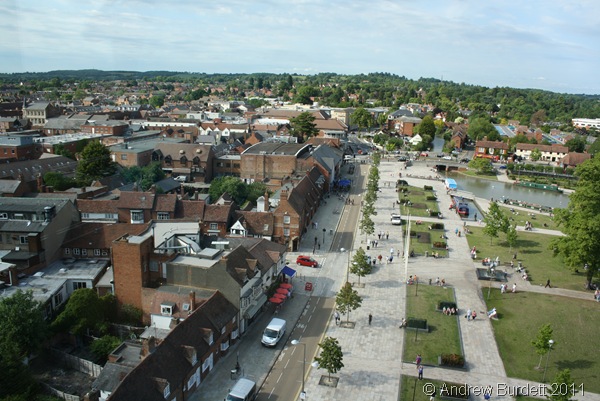
After a delicious picnic lunch of our own, we spent a couple of hours in town, before heading up ‘the Tower’, built as part of the new centre, and a nod to the water tower that was destroyed when the 1879 Shakespeare Memorial Theatre burned down. Rising 36 metres above the height of the River, it gives tourists (such as ourselves) stunning views across Shakespeare’s home town. With the strong wind, however, lashing against the slightly open windows, there was a loud, unnerving howl inside!
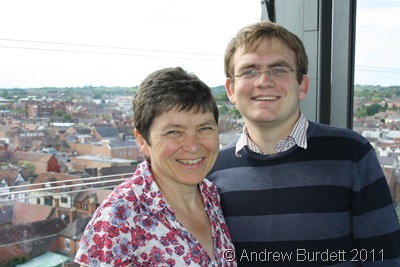
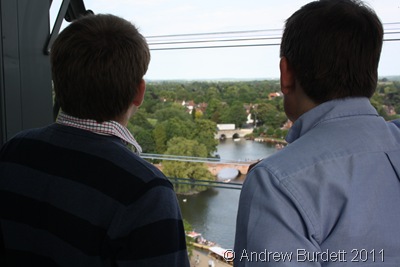
After coming down from the Tower, we set off in search of some grub, with our quest concluding at a Wetherspoon’s (just a short walk from through the town). There was a great atmosphere, especially when England scored a goal, at 5:52pm [not that, given my family, we knew who was playing].
Then, it was back to the theatre, where we took our seats for the evening’s performance of Macbeth. This was the real reason for our trip – I’ve been studying the play in English recently, but there’s nothing like seeing the book animated, acted out as Shakespeare intended it to be enjoyed.

I loved how director Michael Boyd (also Artistic Director at the company) used children as the Witches. It gave this production a different edge; unlike the usual use of decrepit women, the contrast of the supposed innocence of children against the darkness of this play worked frighteningly well. Even more eerily was the way they entered – on harnesses from above. Let there be no doubt that this production, the first designed specifically for the renovation, exploited every area of the theatre (including its seven-metre pit beneath the thrust).
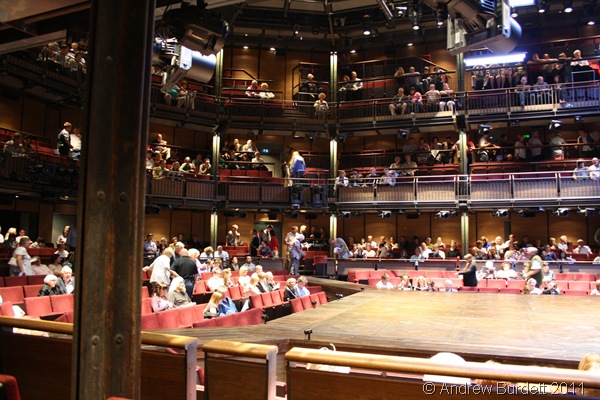
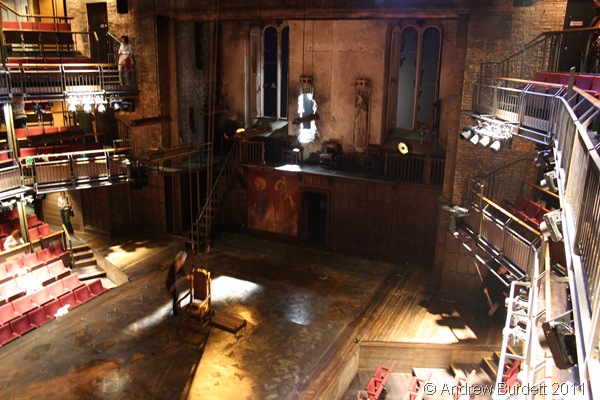
During the interval, I took a moment to further examine this brilliant building. It is wonderful. There’s a cafe, a gift shop, and a splendid foyer. I love that the architects chose to reuse bits of the old theatre in the new complex. For example, the foyer’s floorboards are in fact made from the wood of the old stage. The top of the back wall of the original auditorium (which now forms the back of the foyer) has been left as it was. It’s a reminder of the old building, but also a demonstration of just how much closer audiences now are to the action. They’ve even mounted the front panel of the controls for the old mechanised stage.
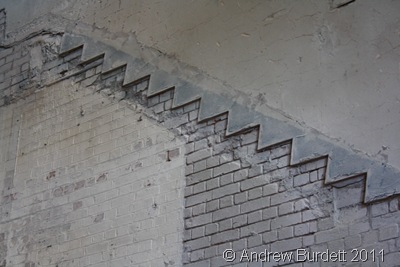
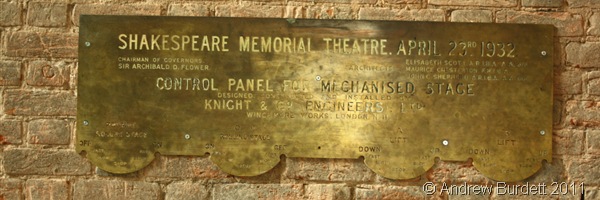
The top level of the main building is now a restaurant. Out of the thousands who pass through the doors of the centre every day, only a fraction go up there. Yet if they do, they are greeted by three chairs, too high to sit on, attached to the old wall. They are the three furthest seats from the 1932 auditorium – a whopping 30 metres away from the stage – left as a legacy of the old building. Now, the furthest seats are half that (15 metres away). And boy, when you can see the splash of Macbeth’s blood as it drips onto the stage, you notice the difference that the intimacy makes.
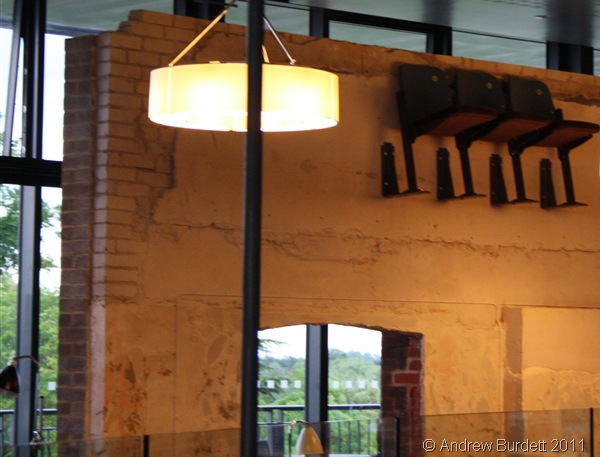


Very informative. Nice shots of the theatre, though I wish you had a larger image of the stage. I’ll pass this blog page on to the Drama and English teachers on staff.
Thank you very much indeed! I may change it to be a larger version of that image later. Thanks again!